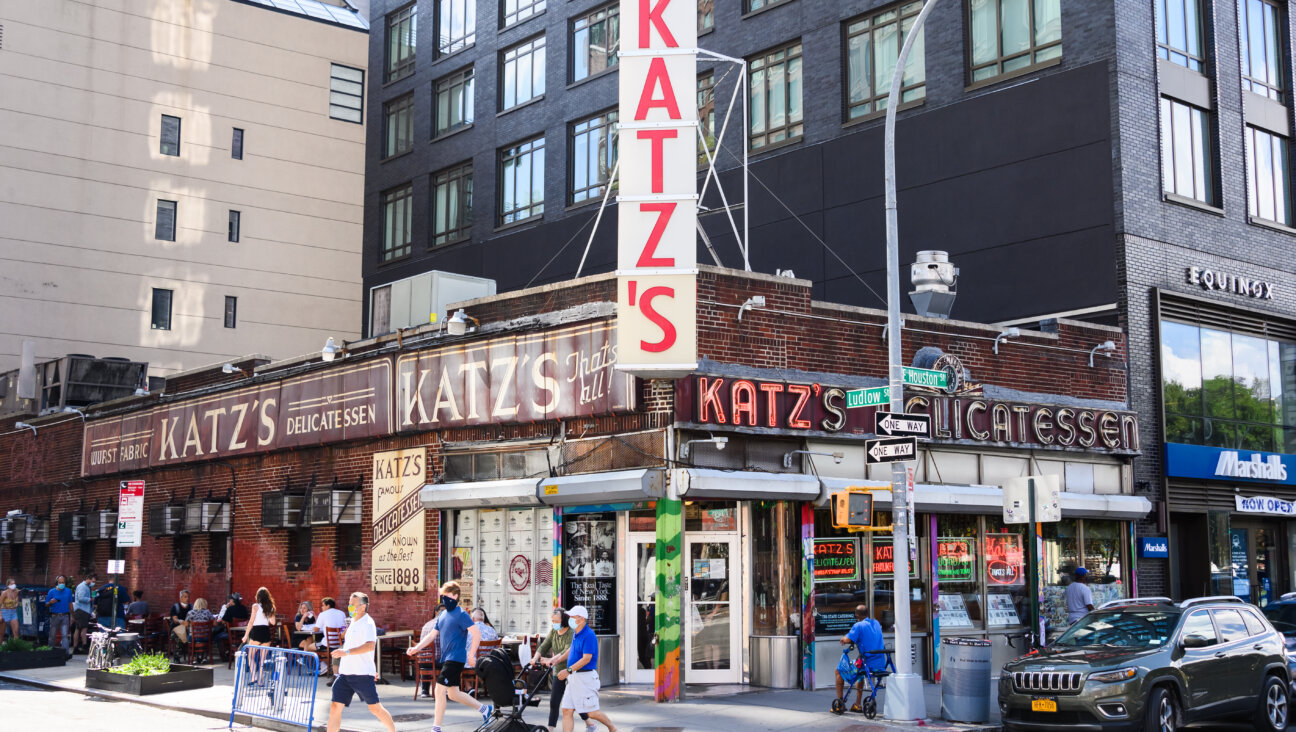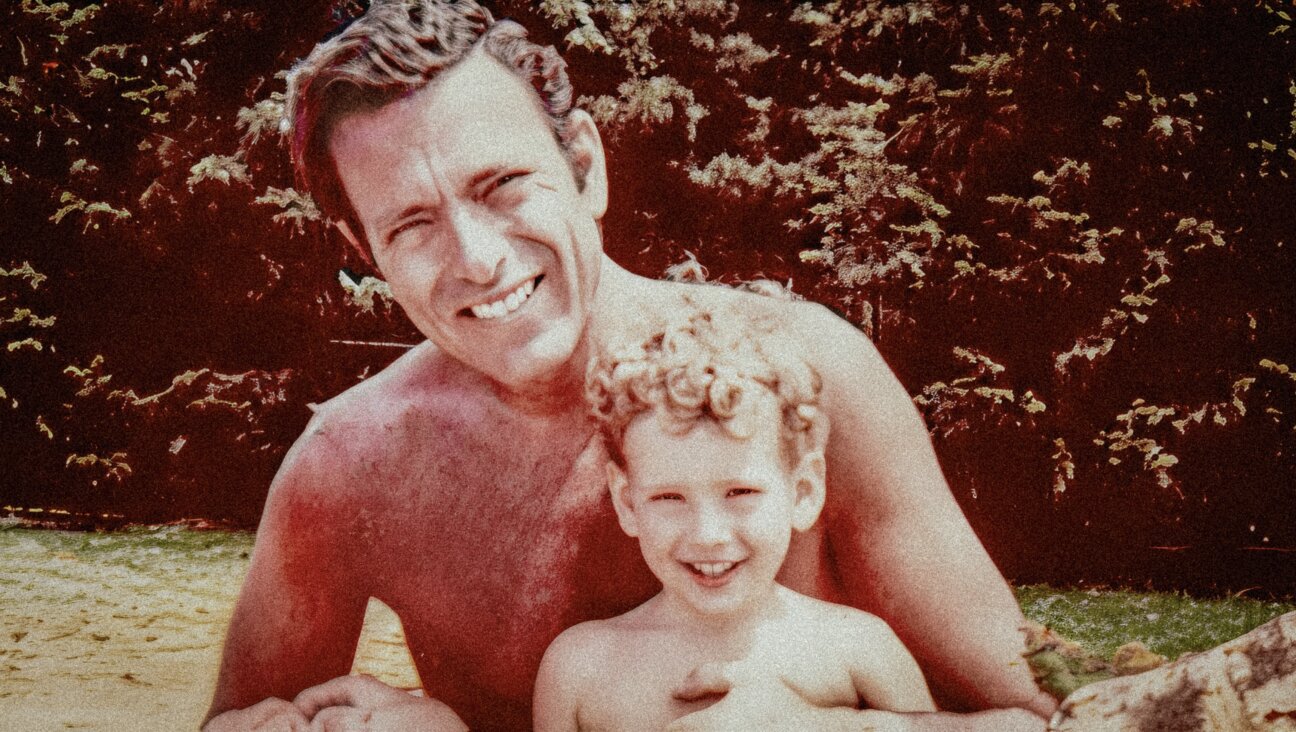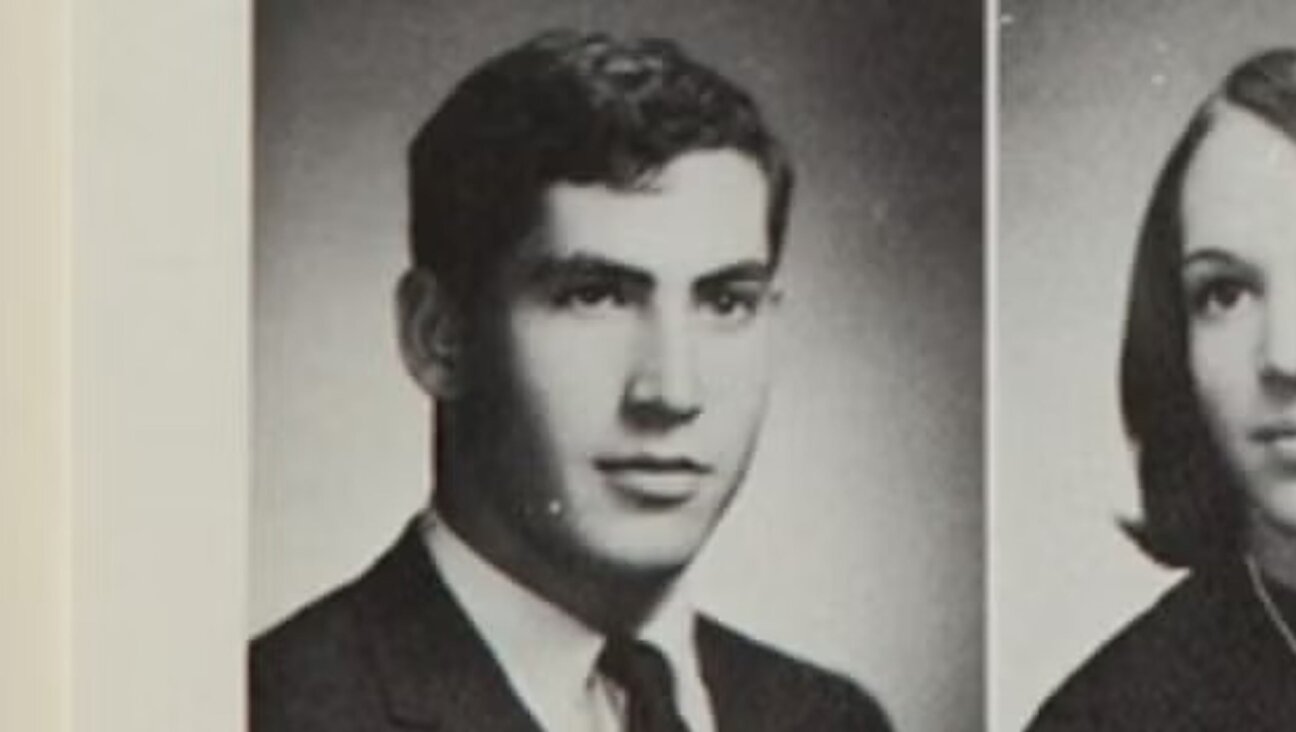West Bank Residents Slam Geneva Peace Plan
EFRAT, West Bank — Meat cleaver in hand, Simcha Levy stands behind his counter in the Ish Efrat supermarket, preparing fresh chicken schnitzels for sale.
He takes a piece and lays it on the counter, carefully trimming off the outer fat before cutting it in two and laying the two pieces side by side.
Placing a thin piece of plastic across a schnitzel, Levy bangs down his cleaver to flatten the meat so that he can more easily stuff six pieces into a package. All the while he is critiquing the peace proposal drafted and released last week by a group of Israeli opposition figures and Palestinian Authority officials. Among other things, the so-called Geneva Understandings call for cutting in two the historic Etzion settlement bloc south of Jerusalem, with the city of Efrat going to the Palestinians, while Israel retains the original Kfar Etzion settlement.
The loud sound of the cleaver smashing the meat adds emphasis to his views about the plan and the leader of the Israeli team that helped draft it, former justice minister and peace negotiator Yossi Beilin.
“In any other place they would have prosecuted him and had him tried as a traitor,” Levy said. “People are wasting their time on this.”
Whack!
“I’ll say it bluntly: All the years they were in power, [the left] kissed ass with the Arabs in order to get peace, and they didn’t get anything from them.”
Bang!
“What they didn’t manage to do while they were in power, they will manage to do while they are not even in the Knesset? Idiocy.”
Thump!
The Geneva Understandings proposed detailed solutions on issues such as Palestinian refugees, Jewish settlements, Jerusalem and borders, and have received a mixed response from Israeli political figures. Israeli government officials denounced the effort, while Labor Party and Shinui leaders are divided, with many on the left hailing the understandings.
In Efrat, however, the plan appears to be almost universally disliked. Shoppers strolling through the supermarket in Efrat expressed identical feelings to Levy’s, young and old alike articulating the very same sentiments: The plan is unrealistic, Beilin is a nobody, he has no legitimacy, he was given no mandate to negotiate with anyone, he was not even elected to the Knesset in the most recent elections.
“I think Yossi Beilin should realize that the reason he was not elected is because people don’t agree with him,” said Varda Epstein, who moved to Efrat a year ago from a neighboring Etzion bloc community. “He’s trying to push through a plan, and he’s done that in the past. He goes behind people’s backs, and he does sneaky, nasty things and tries to serve it to us as a fait accompli. He’s going to be the bad guy in the history books. Just wait — he’s going to be viewed as a criminal.”
Rabbi Shlomo Riskin, chief rabbi of Efrat, dismissed out of hand the whole idea of surrendering Efrat.
“It makes such little sense that it’s difficult to take the whole issue seriously,” Riskin said. “I honestly believe that long after history has long forgotten the name Yossi Beilin, Efrat will be a proud and strong city of Israel bordering Yerushalayim.”
Riskin said it is inconceivable that Jews will leave their homes in long-standing communities in the territories.
Some question Beilin’s motives, wondering who is backing his efforts, which include plans to mail the Geneva Understandings to every home in Israel shortly after it is signed in Switzerland on November 4, the eighth anniversary of the assassination of Prime Minister Yitzhak Rabin.
“Follow the money,” said Eve Harow, a longtime political activist and a member of the Efrat local council. “This has to be costing millions. They’re going to be putting it in every house in Israel? Who the hell is funding that? If we get the answer to that, then I think other things will become clear. But the plan is total idiocy. The fact that people are taking it seriously has to be taken seriously, but the plan itself shouldn’t be taken seriously.”
The proposal to surrender a portion of the Etzion bloc came as a particular surprise to many. The story of the Etzion bloc, or Gush Etzion, is intertwined with the history of the founding of Israel, which is why the proposal to hand over Efrat is seen as such a radical idea.
The first attempt to settle the Gush Etzion was made in 1927 by a group of Yemenite Jewish agricultural pioneers, but they were forced by the Arab riots of 1929 to flee their homes. The first kibbutz there, Kfar Etzion, was founded in 1934, but the Arab riots that raged between 1936 and 1939 forced the abandonment of the kibbutz. A group of pioneers returned in 1943, and three more kibbutzim were later founded.
Two weeks after the United Nations General Assembly voted in 1947 to partition British Mandate Palestine, a Jewish convoy was attacked on the road to Gush Etzion, and 10 men were killed. Attacks continued, including against a detachment of 35 men who were attempting to bring supplies by foot to the besieged Gush Etzion settlements. All were killed, and the story of the “Lamed Hey” (the Hebrew letters that together represent the number 35) became legend.
For three days in May 1948, residents of Kfar Etzion were able to hold off a large Arab army headed for Jerusalem. But it surrendered, together with the other three kibbutzim, the day before the State of Israel was declared.
In 1967, after the Six-Day War, the children of some of the original settlers returned to Kfar Etzion and resettled there. Today, Gush Etzion consists of 17 settlements and about 11,000 Jewish settlers, with more than 7,000 in the city of Efrat. Some 30% of Gush Etzion’s residents are English speakers.
Because of that history, all the settlements within the Etzion bloc — known as the southern gateway to Jerusalem, which is 20 minutes to the north — were always considered part of the Israeli consensus as land that would be retained in any agreement. The Geneva plan could split that consensus.
To Harow, the more important and serious issues are the security fence and whether Efrat should be included inside. Most people in Efrat prefer to be within the fence, as a signal to all that it is a permanent part of Israel, as well as for security concerns.
But Harow takes it as a given — Geneva Understandings notwithstanding — that there is a national consensus that Israel should hold onto Efrat. It is the fence itself she is worried about, fearing that it is being built not for security but as a future border that will leave all of the West Bank beyond it to the Palestinians.
“Efrat and the Gush have always been in the consensus. Even in Camp David this was going to be included,” she said, referring to the unsuccessful American-sponsored peace summit in July 2000 between Palestinian leader Yasser Arafat and then-Israeli Prime Minister Ehud Barak. “So if they want to prove to me that it’s not a political wall and it’s just a security wall, I want to be outside of it. Because then we can say, ‘If we’re in the consensus and outside of the wall, it shows it is just for security reasons and not a political wall.’ We have the power here in the Gush to be able to do that, because we are in the consensus.”





















